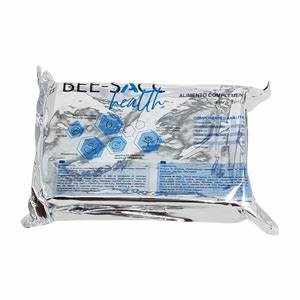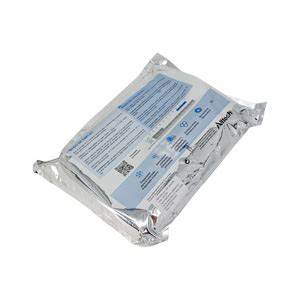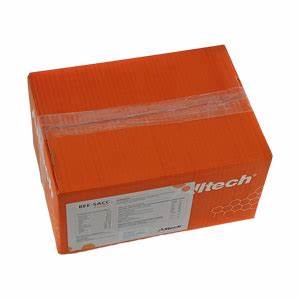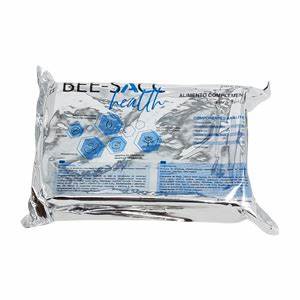
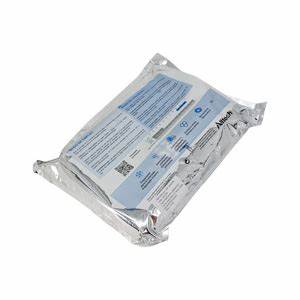
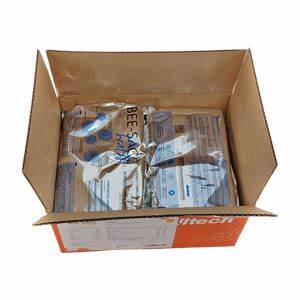
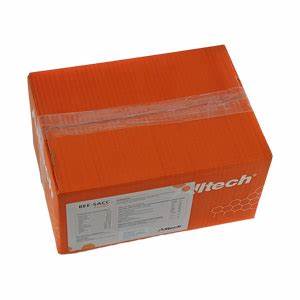
PayPal
Paga en 3 plazos sin intereses
Disponible para las compras de 30 € a 2.000 €. Sin comisiones de apertura ni por pago atrasado.
Disponible para compras de entre 30 € y 2.000 €. Debes residir en España y tener una cuenta de PayPal. Ejemplo representativo: TAE 0%. TIN 0%. Importe de adquisición al contado y precio total a plazos: 165 €. Plazo: 2 meses. 3 cuotas de 55 € con vencimientos mensuales, con el primer vencimiento en el momento de la compra. Sujeto a la aprobación por parte de PayPal. Consultael documento de información previay los términos y condicionespara más información. Disponible solo para clientes mayores de 18 años. Tienes un plazo de 14 días para desistir de tu crédito. El prestamista es PayPal (Europe) S.à rl et Cie, SCA, 22-24 Boulevard Royal, L-2449 Luxemburgo. Un crédito es un compromiso vinculante que debe ser reembolsado y puede afectar a tu historial crediticio. Asegúrate de verificar tu capacidad de reembolso antes de comprometerte. Esta información es proporcionada por PayPal.
Protein cake with 17% protein and high digestibility
BEE-SACC is a complete protein feed designed to feed swarms in times of shortage in the field. BEE-SACC is presented in the form of a cake with a large available surface area that maximizes the access of bees to the food, while making it easier for the beekeeper to handle. The combination of different nutritional technologies makes BEE-SACC a unique and exclusive product on the market.
Contribution of protein and essential amino acids
The base of BEE-SACC is a specific strain of brewer's yeast Saccharomyces Cerevisiae strain 1026, which provides a high level of easily assimilated protein with a profile very similar to that of pollen, providing the levels of essential amino acids necessary for the development of the colony.
Energy contribution
BEE-SACC provides sugars, mainly in the form of mono and disaccharides, which are highly assimilable by bees, which also give it great palatability.
Contribution of vitamins and minerals
Just as pollen is the main source of vitamins and minerals for the colony, BEE-SACC also guarantees adequate levels of vitamins, especially those of group B, which cannot be synthesized by the body.
Its specific contribution of certain minerals (Zn, Se) is also very important due to their crucial role in numerous metabolic processes, as well as in the immune response of bees. BEE-SACC is supplied from trace elements in organic form (Bioplex Zn, Sel-Plex) that reproduce the mineral form present in plants and pollen, much more bioavailable than the inorganic forms commonly used in food supplements.
Improved immunity
The immune system of bees is weaker than that of most species in the animal kingdom, which makes them very sensitive to environmental factors such as the application of pesticides, exposure to parasites or other infections or intestinal disorders.
BEE-SACC provides prebiotics (Actigen) that help improve the colony's response to these types of challenges, promoting an optimal immune status.
Applications
Bee-Sacc is recommended for use in the following situations:
- Pre-hibernation period.
- Stimulation of laying before the first flowering.
- Lack of pollen in the field.
- Transport (transhumance).
- Confinement (bee-eater...).
- Monocultures: Lack of variety of floral species in the field.

